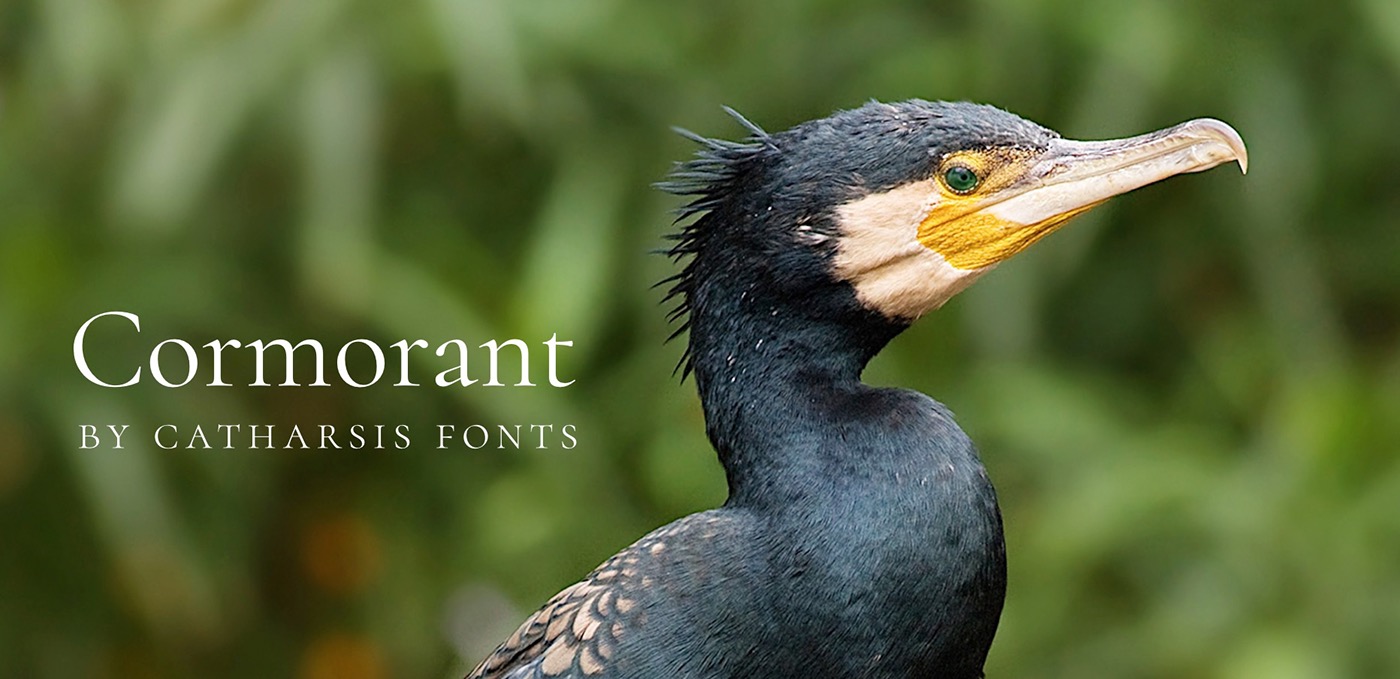
Cormorant is an original design for an extravagant display serif typeface inspired by the Garamond heritage, hand-drawn and produced by Catharsis Fonts. While traditional Garamond cuts make for exquisite reading at book sizes, they appear clumpy and inelegant at larger sizes. The design goal of Cormorant was to distill the æsthetic essence of Garamond, unfetter it from the limitations of metal printing, and allow it to bloom into its natural refined form at high definition.
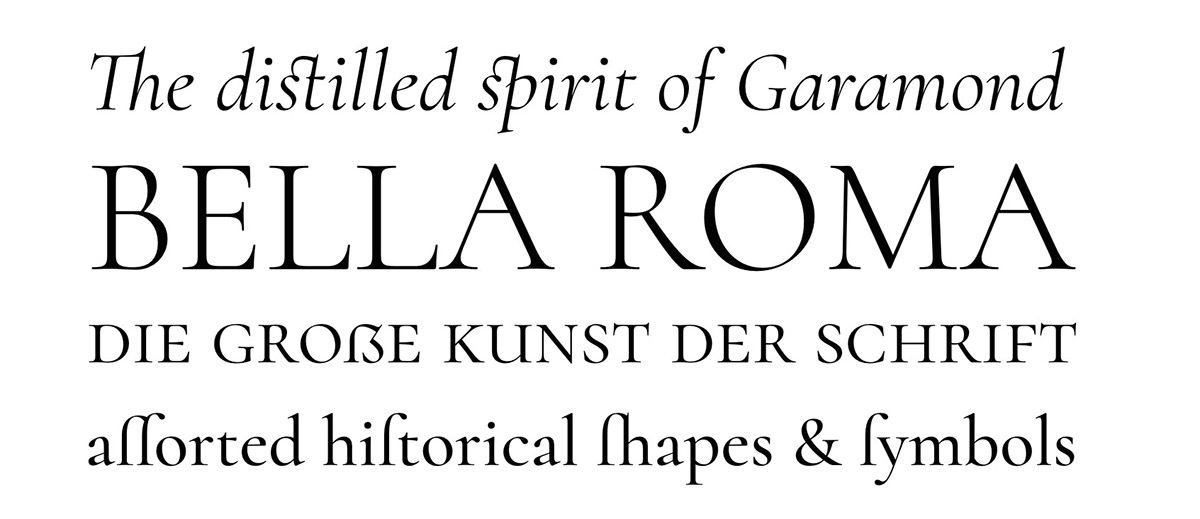
Cormorant is characterized by scandalously small counters, razor-sharp serifs, dangerously smooth curves, and flamboyantly tall accents. While many implementations of Garamond at small optical sizes already exist (including the open-sourced EB Garamond by Georg Duffner), Cormorant aims for the sparsely populated niche of display-size counterparts that exploit the high resolution of contemporary screens and print media to the fullest.
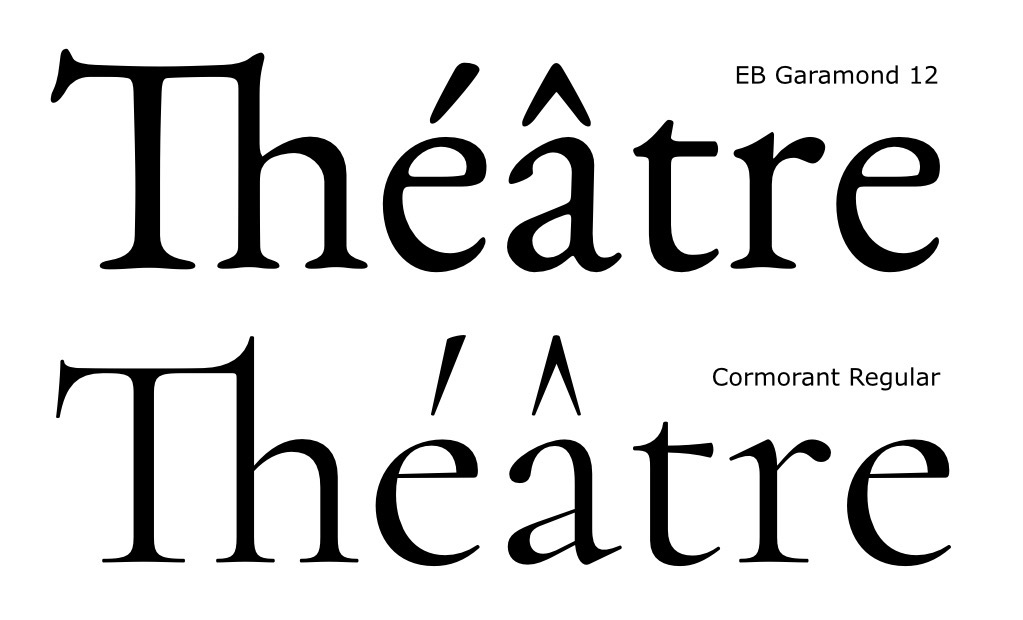
While Cormorant's quality is most evident in titling and poster usage at the largest sizes, its Garamond genome renders it highly legible down to text sizes on high-resolution devices and in print. This is particularly true about the «Cormorant Garamond» cuts of the typeface.
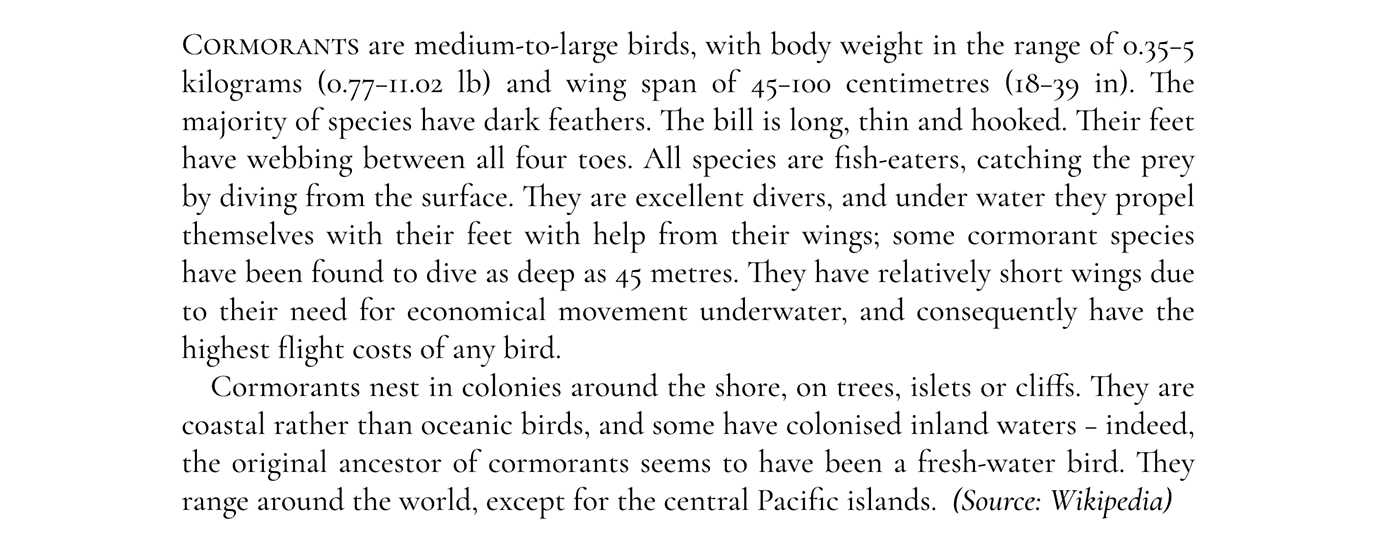
Cormorant incluces full Cyrillic support.
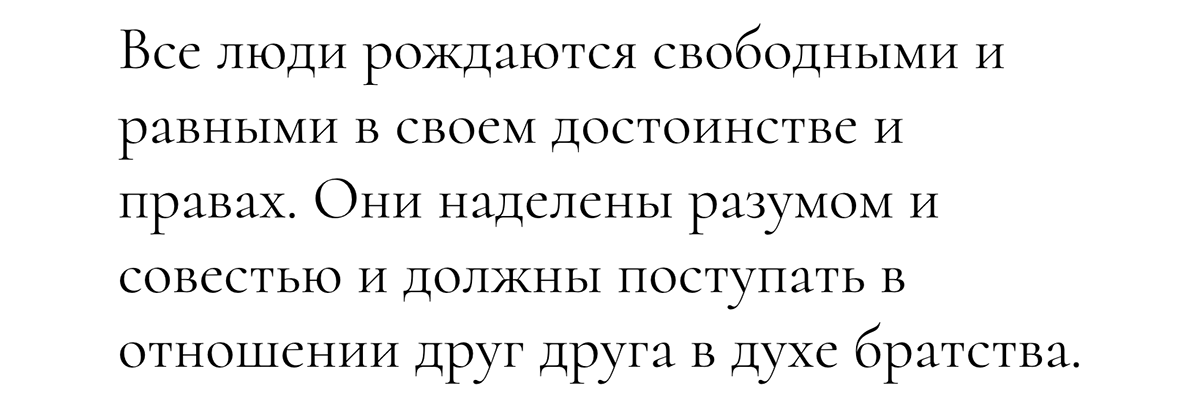
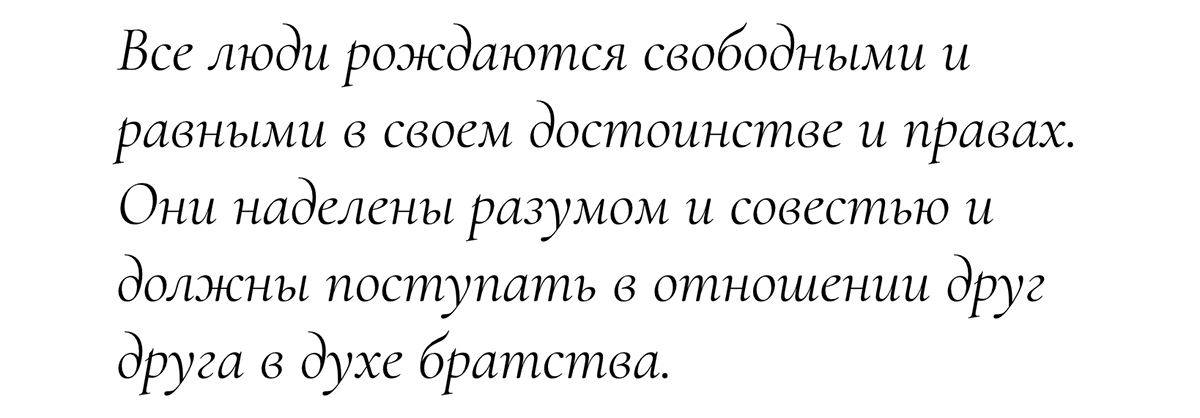
Cormorant fonts come in three distinct master styles: The classic Cormorant Roman, the matching true italics Cormorant Italic, and an unslanted cursive named Cormorant Upright. Furthermore, four variant styles of the Roman are offered to make the most important OpenType alternate features readily available to users without OpenType-savvy applications: Cormorant Garamond, which offers larger counters and subtly more traditional Garamond shapes for a few key characters to achieve more reading comfort, Cormorant Infant, in which the letters «a g y» and their derivatives are replaced by gentle schoolbook-style single-storey shapes; Cormorant SC, in which the lowercase glyphs are replaced by small-caps; and Cormorant Unicase, a small-caps variant with some lowercase letterforms for an eye-catching futuristic look.
Each style is available in a range of five weights: Light, Regular, Medium, Semibold, and Bold.

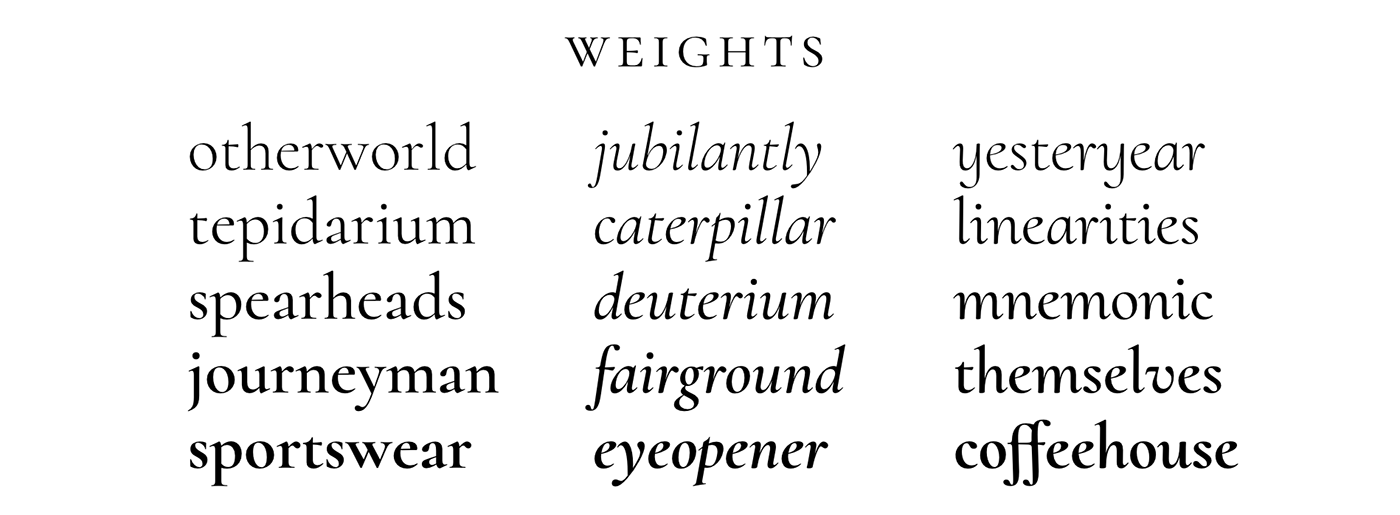

Cormorant is a native 21st-century typeface making ample use of OpenType technology. Some OpenType features are applied automatically while you type, subtly improving the flow of the text. This includes kerning, standard ligatures, and contextual alternates. Other features are intended to be activated manually by the user, such as discretionary ligatures, stylistic alternates, small capitals, and alternate figure sets. Note that not all text processors, design applications, or browsers support all OpenType features, and some applications may require the user to switch these features on manually (such as Microsoft Office).
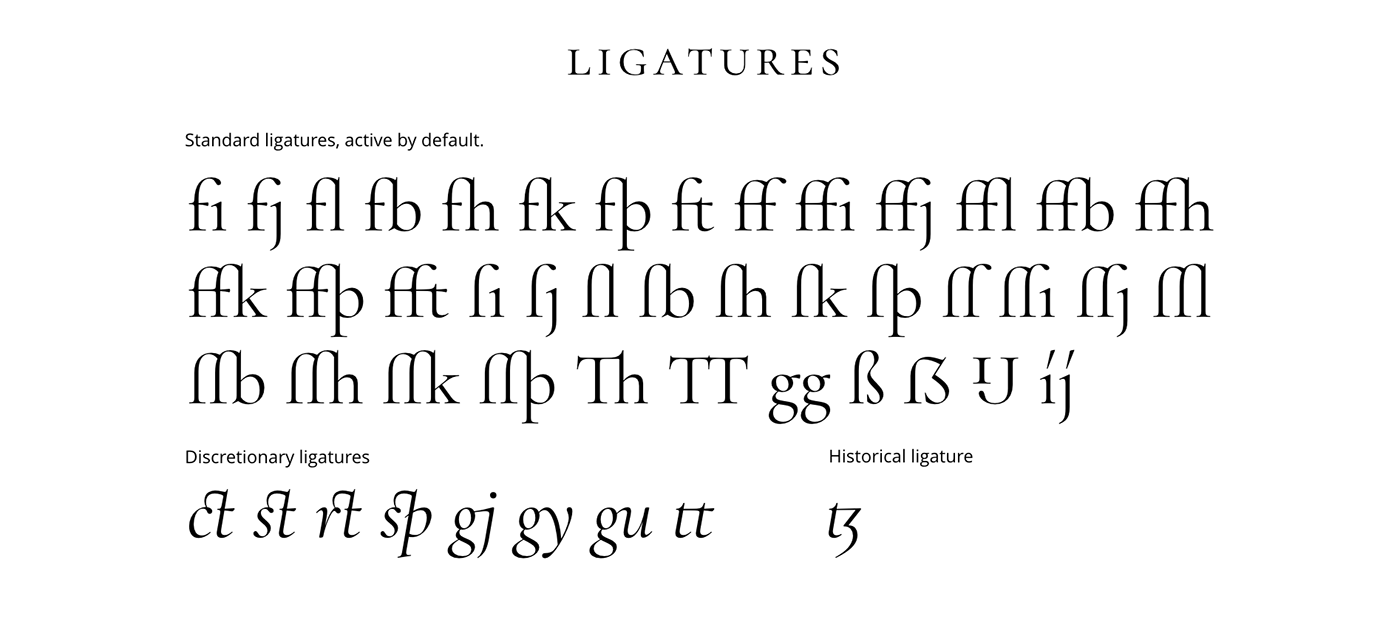
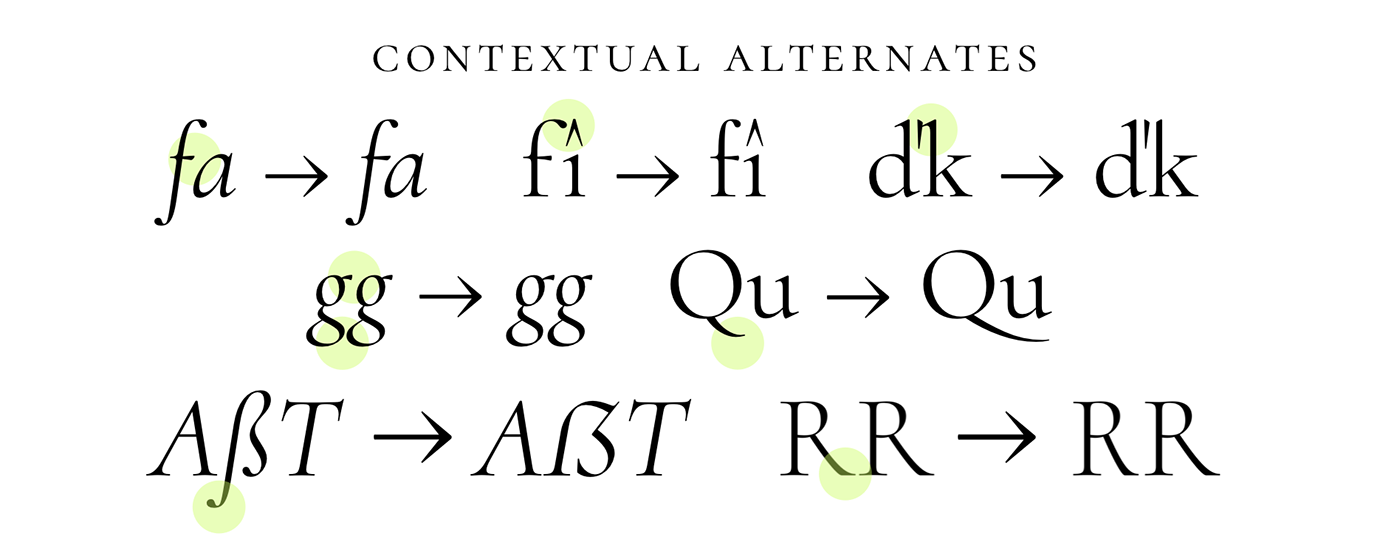
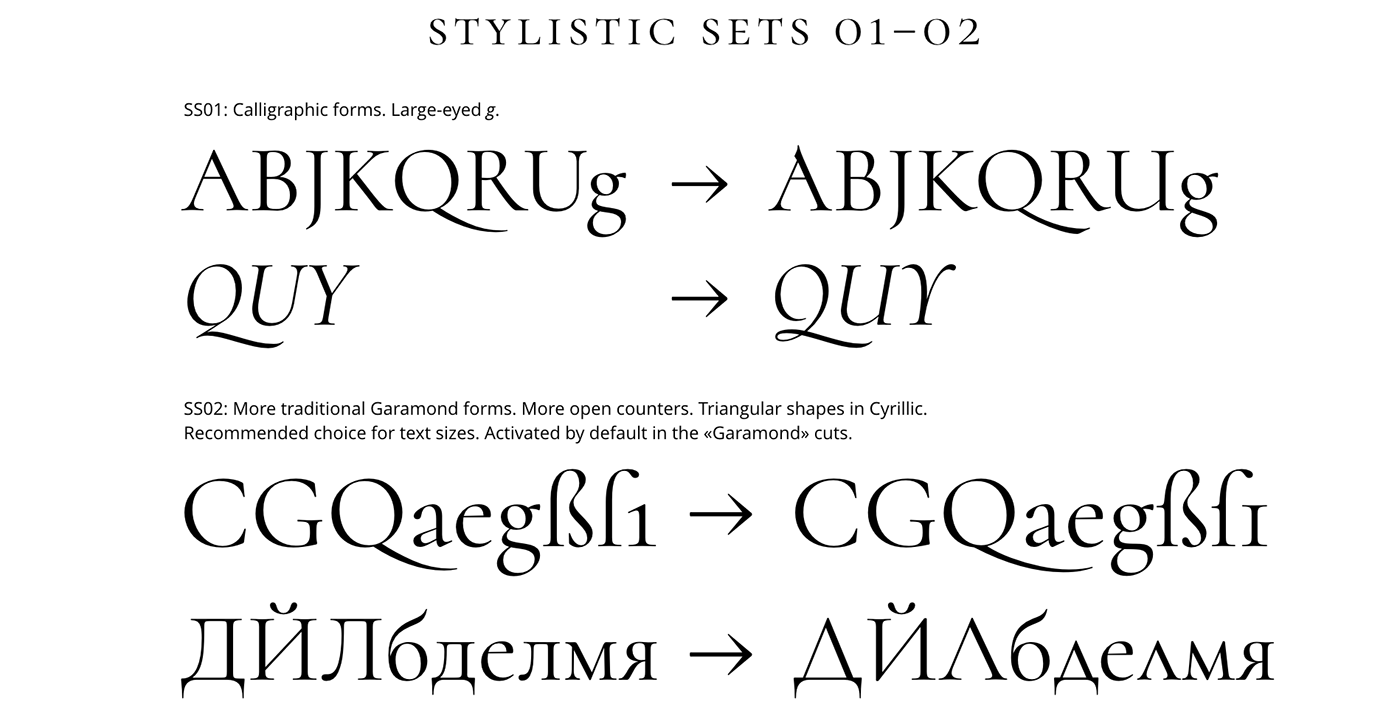

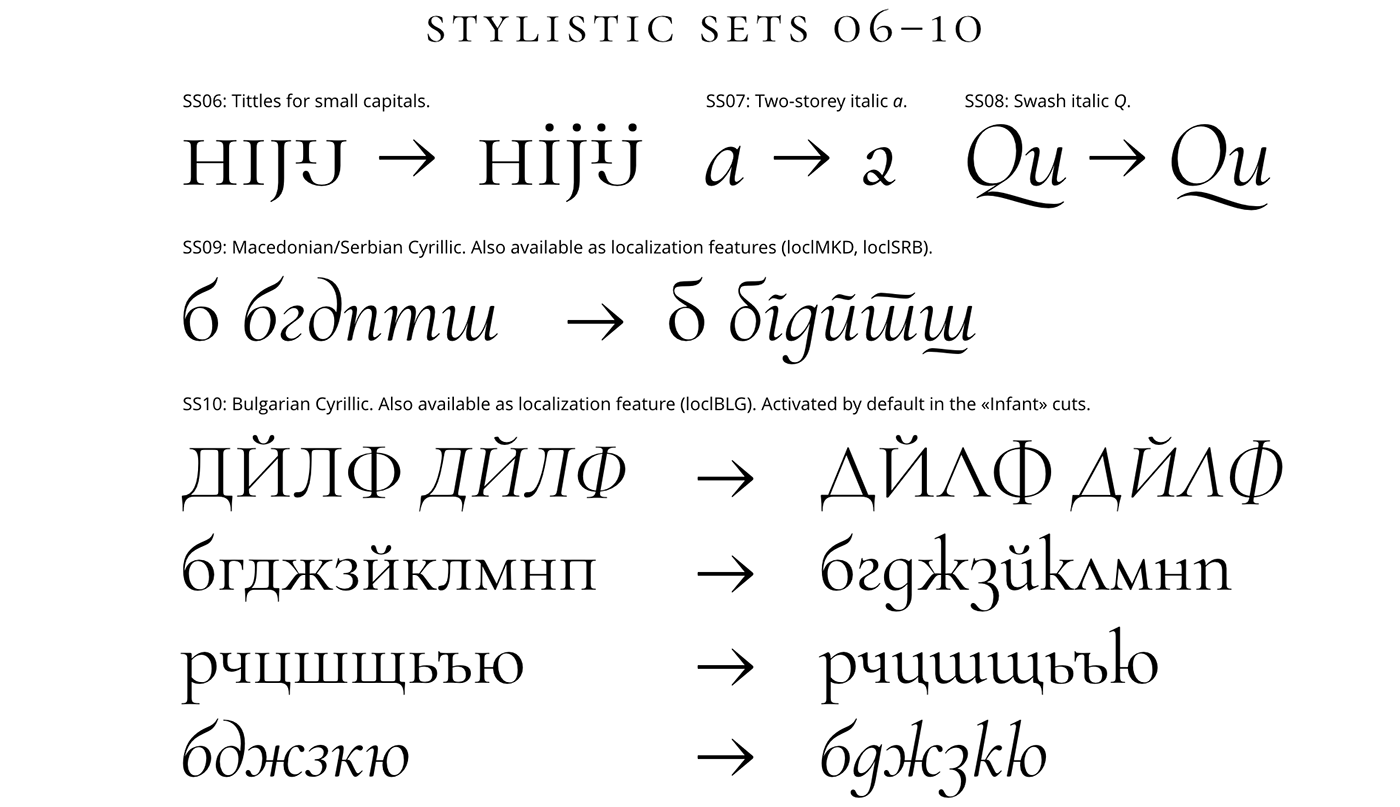




Like all Catharsis Fonts typefaces, Cormorant features an extensive character set (Adobe Latin 4) supporting a wide range of languages, such as Vietnamese. Cormorant Roman includes over 1500 glyphs, Italic and Upright over 1000.
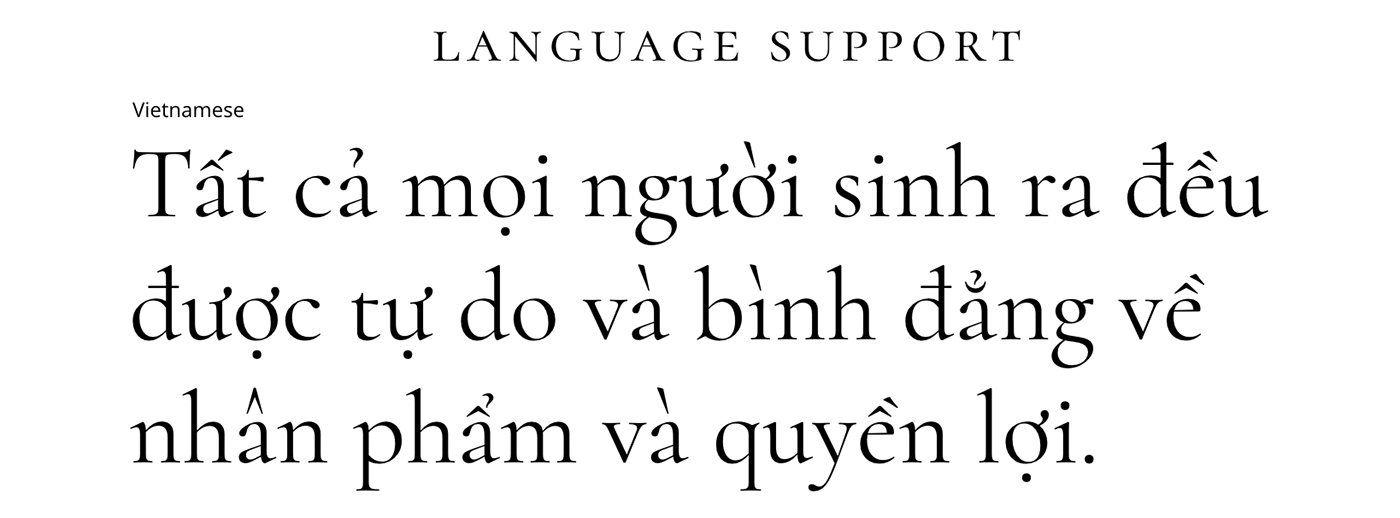
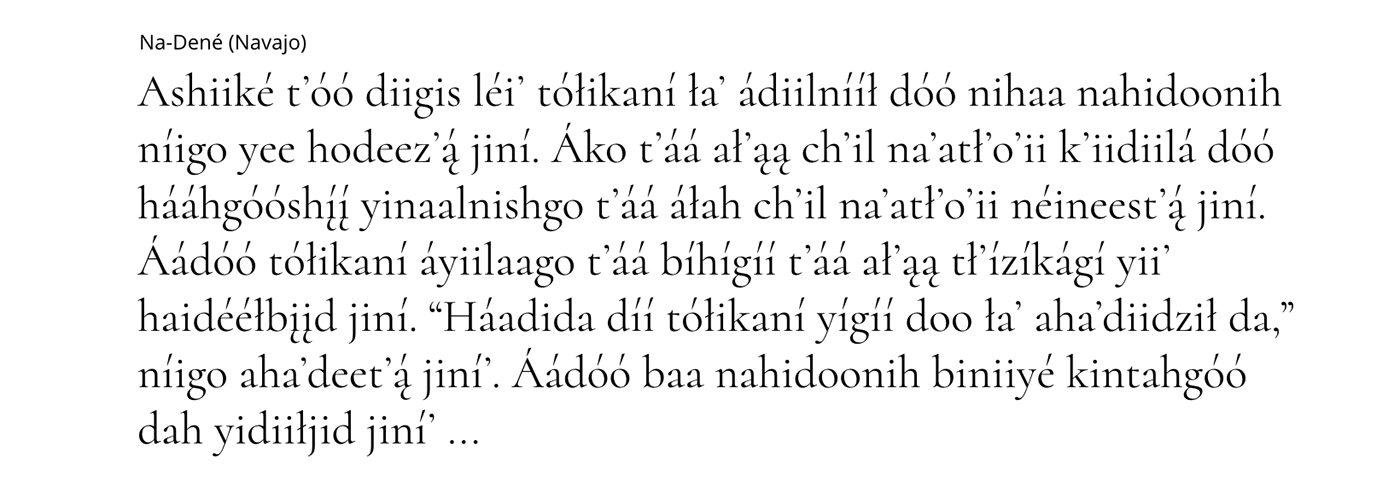
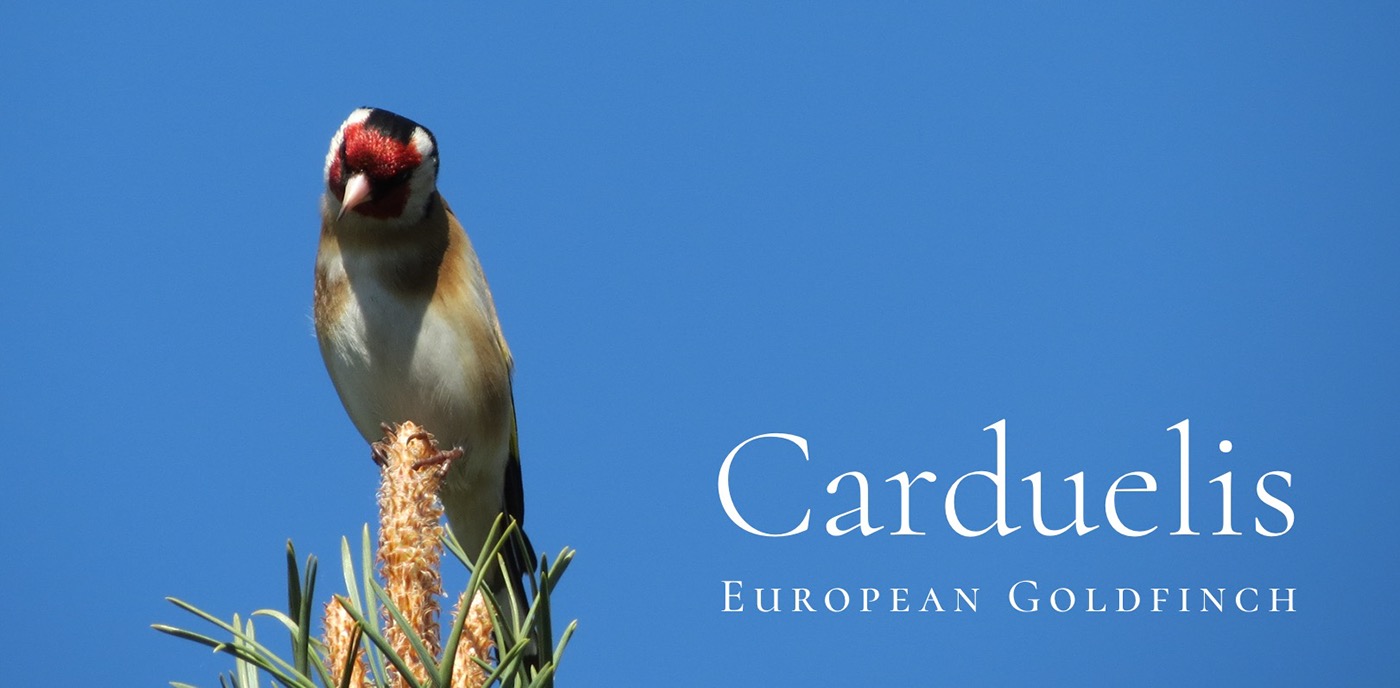
License and Download
The Cormorant typeface and all its associated font files are free software under the SIL Open Fonts License (OFL). Essentially, this gives you the right to download, use, and redistribute the fonts as you like, provided that (1) you retain my copyright notices; (2) you do not redistribute this software without this license information; and (3) you do not redistribute the fonts by themselves for a fee (though you are allowed to sell them as part of a bundle containing other items.)
To install the Cormorant font files, please visit this page. Download the latest «Cormorant_Install» ZIP file, expand it, and install the .otf files as appropriate for your operating system. If you are interested in the source files, please visit the Cormorant GitHub page.
NEW! Cormorant is also available as a free webfont from Google Fonts. Use it for your websites!
If you like Cormorant, please also check out the following typefaces by Catharsis Fonts, available from MyFonts:
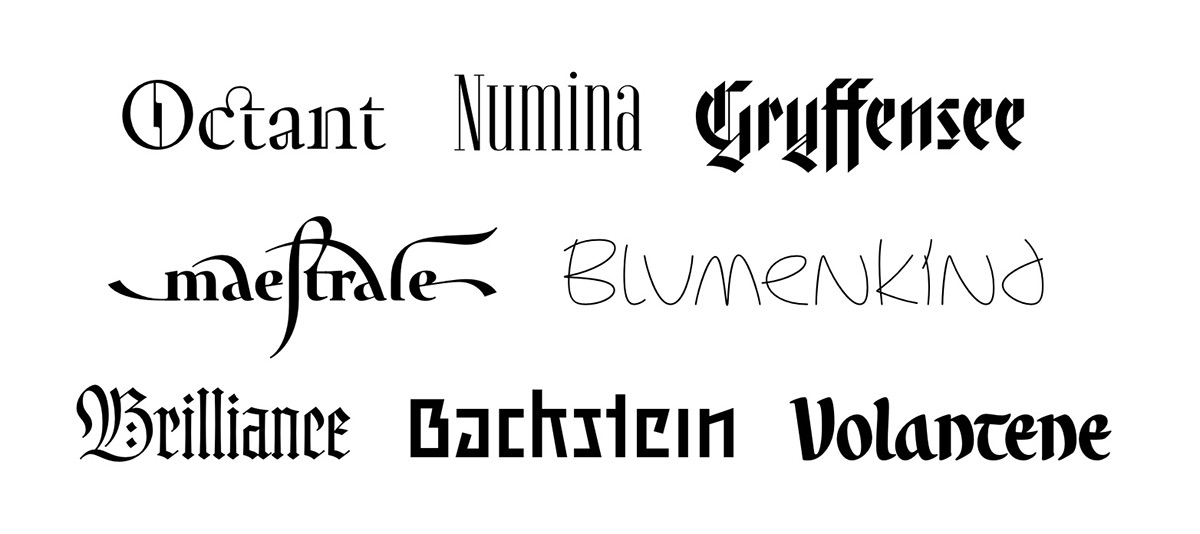
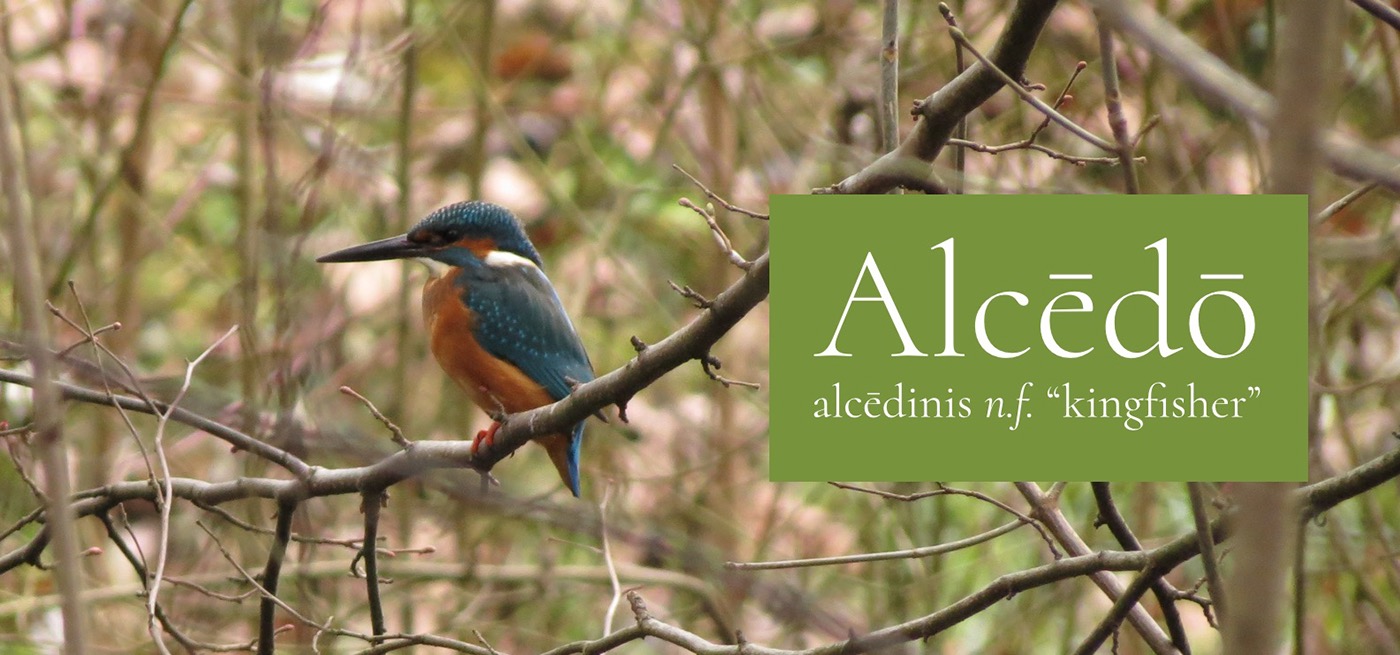
Acknowledgements
Cormorant was conceived, drawn, spaced, kerned, programmed, interpolated, and produced in its entirety by myself (Christian Thalmann, Catharsis Fonts). I did all the work with Glyphs, which I consider the world's best font editing software. It's not free, but it's worth every penny ten times over; I cannot recommend it enough. I used the public beta version of the RMX Harmonizer plug-in to ensure curve quality.
While this project was heavily inspired by Claude Garamont's immortal legacy, I did not use any specific font as a starting point or direct reference for my designs. Most glyphs were drawn from scratch; when I needed guidance on a specific character, I searched MyFonts for the term «Garamond» and skimmed through the results for a general impression.
I am very grateful to the creative souls on the TypeDrawers forum and the (late?) Typophile forum for teaching me all I know about type design in the first place, and for providing me with a large amount of excellent feedback on Cormorant in particular. Likewise, my gratitude goes to the tireless folks at Glyphs — in particular Rainer Erich Scheichelbauer (Mekka Blue, Schriftlabor) and Georg Seifert — for the creation and support of their magnificent engine. Special thanks go to Dave Crossland and Google Fonts for making the Open Source release of this font family possible through generous funding of the development process.
The cormorant photograph used in the title bar was taken by JJ Harrison and shared under a Creative Commons license on Wikipedia. The goldfinch and kingfisher photographs are my own. The cormorant glyph below is part of the Cormorant typeface; it is encoded as a stylistic alternate of the floral heart (❦) in most of the fonts, and as the default floral heart in the Cormorant Infant series.

